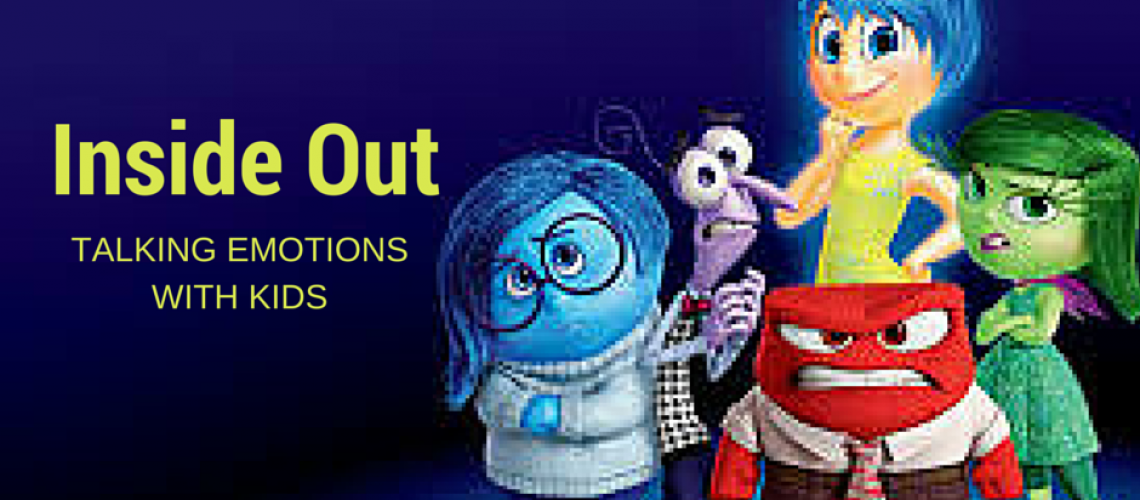The latest movie from Pixar, ‘Inside Out’, does a great job of balancing the complex elements of neuroscience whilst remaining connected to a younger audience in both an engaging and entertaining way. I took my kids to see this during the school holidays, and I must say it is probably the only time I was actually able to take all 5 of them, from the 14 year old down to the 3 year old.
Without spoiling anything for those that haven’t seen it, the movie takes us right inside the mind of an 11 year old girl, Riley. The emotions that reside within the headquarters of her mind play a major part in the movie…….as they do in our world. These emotions take up much of our attention, form much of our judgements and help to develop our very perceptions of the world around us. Our emotions also play a major hand in the formations of our memories, which ones we keep, those we discard and those that change with time. They shape how we relate to other people and how we interact with them and behave around them.
Giving our kids the skills and understanding to understand and recognise their emotions is one of the greatest things we can teach them. Particularly when it comes to recognising those emotions that tend to send us a little off kilter. The ones that make us react irrationally, or threaten to hurt others, or make us do things we don’t want to do. Or prevent us from doing those things we do want to do.
All of this is explored in the movie and I think it is a great segway into conversations about emotions. Giving them a visual of the emotion is also an effective way for younger kids to get a handle on the concepts (and has also proven to be beneficial for those kids on the autism spectrum), and as a way to recognise when certain emotions are coming in to play.
Here are some interesting discussion points and questions you could use with your kids (obviously the language used and complexity of discussion will vary depending on the age and emotional maturity of the child).
Memories
Memories are not set in concrete. They change and can be tainted with different emotions at different times thus changing their structure. It is largely these emotions that help us restructure the past.
- What are some of your most vivid memories?
- Why do you think those memories stand out?
- How can memories be changed by later life experiences?
Sadness
One of the major focuses of the movie was on the role of sadness in all of our lives. Feeling sad was portrayed as an experience that whilst ‘sad’ is one that has to and will happen. Sadness is part of growing up, it is ok and you will be ok. I think this is a really important message and could lead to many useful discussions.
- When was a time you felt really sad?
- How long did it last?
- Does it make you sad to think about it again?
- What sorts of things did you do to make you feel better?
- Who did you want to be around?
- Is there anything you could try next time when you are sad?
Dealing with emotions
Whilst Riley’s parents wanted her to be happy and for everything to be ok, we begin to realise that we actually need all those other emotions and that it is ok and even important to be able to recognise them. Sadness, joy, anger, frustration and fear will all come in to play at different times. It is how we work with these emotions that determines the extent of their effect on us.
- What happens when we try to suppress other emotions?
- What other emotions do you think could be added?
- What emotions are vying for your attention lately? Nervousness, anxiety, etc
- What are some things you could do if you feel angry? Afraid? Frustrated? Anxious?
- Can you recall a time when you could have felt much worse but did something to help you feel better?
Fear
Sometimes fear is helpful and it protect us from making bad decisions. Other times it is ok to face fear, it helps us push our boundaries and try new things.
- How do you know when to listen to fear and when to challenge it?
- Can you think of times in your life when you were really scared?
- What happened?
- What things are you afraid of?
- What is the likelihood those things will happen?
- When was a time you thought something was going to be really scary but it actually turned out ok?
And finally a really good question for us all to think about:
- What are some of the differences we may have seen had the makers of the movie gone inside the head of an adult or even a teenager?
Understanding our emotions, our triggers and building the skills to deal with those that threaten to overwhelm, is such an important part of managing our behaviours. The more we can help our children develop that understanding, the more resilient they will be, and the more joy they will bring in to their lives.
Have you seen the movie? Did your children understand the concepts? Do you talk about emotions to your children?


This Post Has One Comment
Pingback: Using the movie ‘Inside Out’ to discuss emotions with kids - e-Learning Feeds
Comments are closed.